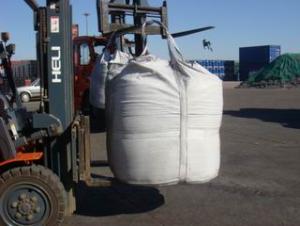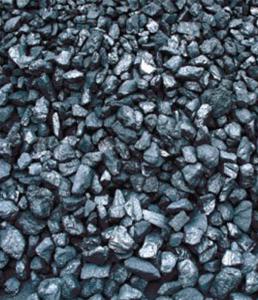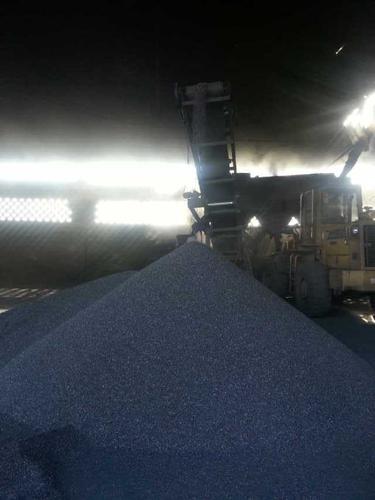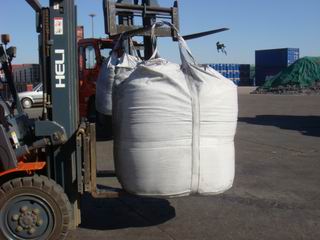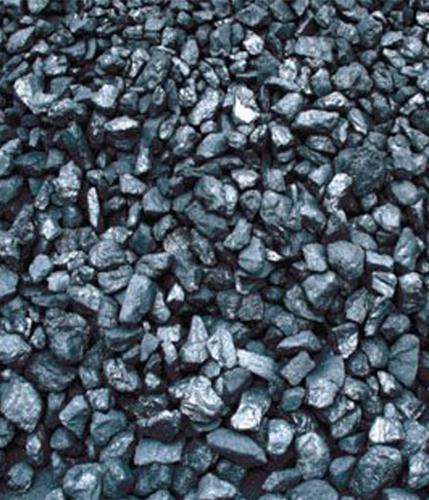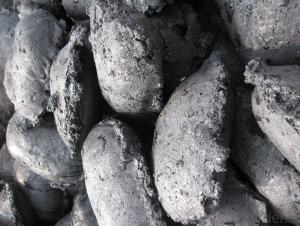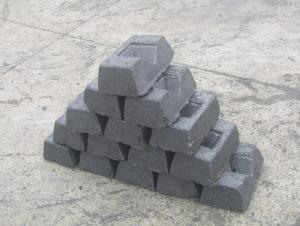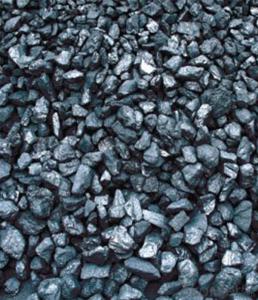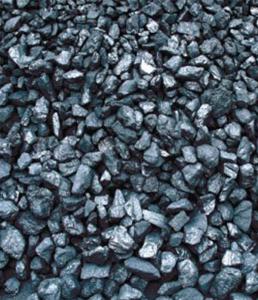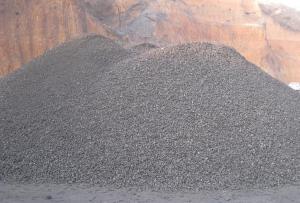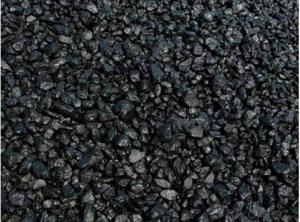Gas Calcined Anthracite made from Taixi Anthracite with low Sulfer
- Loading Port:
- China Main Port
- Payment Terms:
- TT or LC
- Min Order Qty:
- -
- Supply Capability:
- 4000mt m.t./month
OKorder Service Pledge
OKorder Financial Service
You Might Also Like
Introduction of Calcined Anhtracite :
It used the high quality anthracite as raw materials through high temperature calcined at over 2000 by the DC electric calciner with results in eliminating the moisture and volatile matter from anthracite efficiently, improving the density and the electric conductivity and strengthening the mechanical strength and anti-oxidation. It has good characteristics with low ash, low resistvity, low sulphur, high carbon and high density. It is the best material for high quality carbon products.
2: Usage:Calcined Anthracite coal is produced using the best Anthracite-Taixi Anthracite with low S and P, It is widely used in steel making and casting.
3: Package: In mt bags or to be discussed with the buyer
4:General Specification of Calcined Anthracite coal:
PARAMETER UNIT GUARANTEE VALUE | |||||
F.C.% | 95MIN | 94MIN | 93MIN | 92MIN | 90MIN |
ASH % | 4MAX | 5MAX | 6MAX | 7MAX | 8MAX |
V.M.% | 1 MAX | 1MAX | 1.5MAX | 1.5MAX | 1.5MAX |
SULFUR % | 0.5MAX | 0.5MAX | 0.5MAX | 0.5MAX | 0.5MAX |
MOISTURE % | 0.5MAX | 0.5MAX | 0.5MAX | 0.5MAX | 0.5MAX |
Size can be adjusted based on buyer's request.
5:Pictures of Calcined AnthraciteCoal:

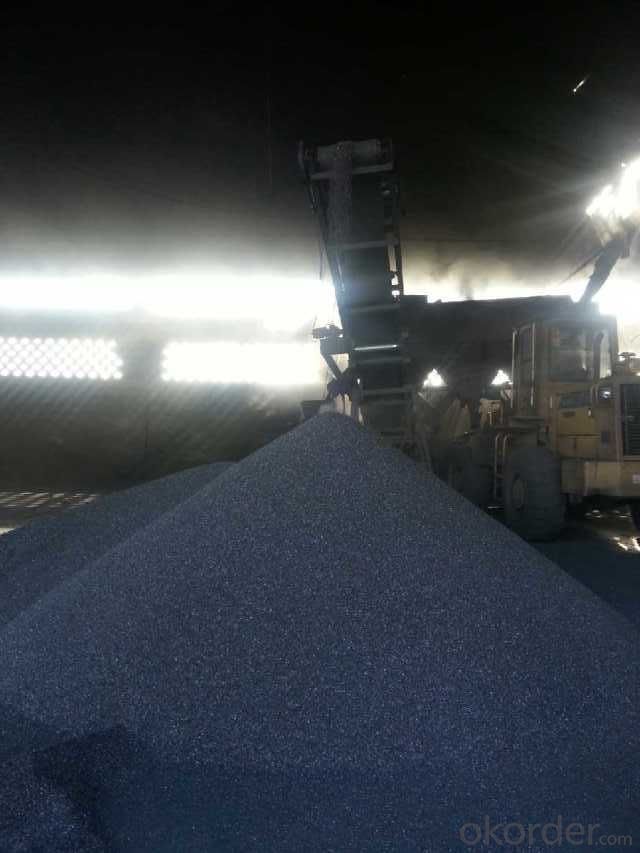
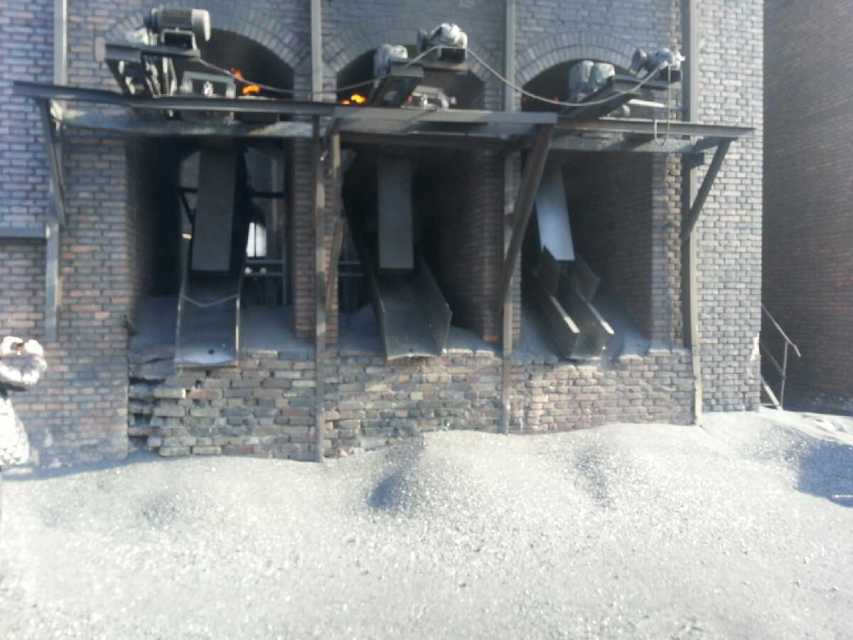
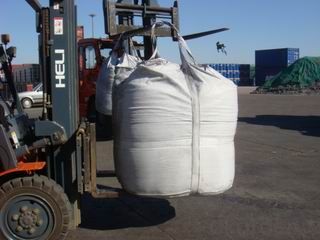
- Q: The printed document will be marked on the document name: carbon copy, no combination number, two links...... What's the meaning of this? What is the connection between the infinite and the two? I MMM
- Carbon free copy of a few, several refers to a few colors, that is, a few single! Is that a joint edge is what two of what is triple what you said and so on the boundless contact I estimate that he designer or boss tell you to explain things without Bian Lian refers to not say a contact department or (what) no Bian Lian case is a version of the paper change down on it, but the color edge contact is not the same a version of a few joint Bian Lian have changed several times I say you understand it?
- Q: Where are carbon fiber sheets and carbon fiber sheets used?
- Carbon fiber is an inorganic material with good rigidity and heat resistance. Carbon fiber resin composite is a kind of plastic. It is easy to process and belongs to excellent plastics in plastics.Compared with steel, carbon fiber has the greatest advantages of low density, high strength, corrosion resistance and so on. But there are also shortcomings, the biggest drawback is poor processability. It's usually a molding (hand, roll, winding, molding and pultrusion).Carbon fiber is a brittle material, but it has high strength and is usually not used alone. But as a fiber reinforcement, it can be added to the resin matrix to improve the properties of the resin and become a high-performance composite.
- Q: What is carbon fixation?
- Living organisms, particularly plants and algae, convert atmospheric carbon dioxide (CO2) into organic compounds through carbon fixation. This process is crucial for sustaining life on Earth and is an integral part of the natural carbon cycle. Through photosynthesis, green plants utilize sunlight, water, and CO2 to generate glucose and oxygen. Glucose acts as a foundational component for various organic molecules like carbohydrates, lipids, and proteins. Carbon fixation not only supports plant growth and development but also maintains a proper balance of atmospheric CO2 levels. It aids in the mitigation of the greenhouse effect by extracting CO2 from the atmosphere and storing it in biomass or soil. Moreover, carbon fixation serves as an essential source of energy and nutrients for other organisms that consume plants or algae. Ultimately, carbon fixation is a fundamental process that contributes to the stability and functionality of ecosystems and holds significant implications for climate change and the global carbon cycle.
- Q: How does carbon dioxide affect textile production?
- Textile production can be significantly impacted by carbon dioxide in various ways. Firstly, the manufacturing process of textiles generates carbon dioxide, which contributes to overall greenhouse gas emissions and worsens climate change. This, in turn, can result in long-term consequences like extreme weather events, rising temperatures, and sea-level rise. These outcomes can disrupt the supply chain and production of textiles. Furthermore, carbon dioxide emissions from textile production contribute to air pollution, which can adversely affect human health. Workers exposed to high levels of carbon dioxide may experience respiratory problems and other respiratory diseases as a result of the release of this greenhouse gas. Moreover, carbon dioxide is commonly used in the dyeing and finishing process of textile production. However, this practice can have detrimental effects on the environment. When carbon dioxide is released into water bodies during the dyeing process, it can contribute to water pollution, contaminating water sources and harming aquatic life. Additionally, excessive use of carbon dioxide in textile production can have economic implications. Since carbon dioxide is a byproduct of burning fossil fuels, its production is inherently tied to the consumption of non-renewable resources. The reliance on fossil fuels makes textile production vulnerable to price fluctuations, as the cost of carbon dioxide emissions and energy production can vary significantly. To mitigate the negative impacts of carbon dioxide on textile production, several measures can be implemented. These include adopting cleaner production techniques and technologies that reduce carbon dioxide emissions, such as utilizing renewable energy sources or implementing carbon capture and storage systems. Furthermore, investing in sustainable and environmentally-friendly materials, like organic cotton or recycled fibers, can help reduce the carbon footprint of textile production. Overall, reducing carbon dioxide emissions in textile production is crucial for the industry to become more sustainable and mitigate its environmental and health impacts.
- Q: What is the role of carbon in photosynthesis?
- The role of carbon in photosynthesis is essential. Carbon dioxide (CO2) is one of the primary reactants in the process of photosynthesis. During photosynthesis, plants and other photosynthetic organisms use carbon dioxide along with water and sunlight energy to produce glucose (a simple sugar). This glucose serves as the main source of energy for the plant's growth and development. Carbon dioxide enters the leaf through tiny pores called stomata and diffuses into the chloroplasts, where photosynthesis takes place. Inside the chloroplasts, carbon dioxide combines with water in the presence of sunlight and chlorophyll to undergo a series of chemical reactions known as the Calvin cycle or the dark reactions. In this cycle, glucose is synthesized and stored as a source of energy for the plant. The carbon atoms from carbon dioxide are the building blocks of glucose and other organic compounds formed during photosynthesis. Through a complex series of enzymatic reactions, carbon dioxide is converted into carbohydrates, lipids, proteins, and nucleic acids, which are essential for the plant's growth and survival. Photosynthesis not only helps in the production of glucose but also plays a significant role in the global carbon cycle. It is the process through which plants remove carbon dioxide from the atmosphere and release oxygen as a byproduct. This helps in regulating the levels of carbon dioxide in the atmosphere, mitigating climate change, and maintaining the oxygen balance necessary for all living organisms. In summary, carbon plays a crucial role in photosynthesis by serving as the raw material for the synthesis of glucose and other organic compounds. It is through this process that plants convert carbon dioxide into energy-rich molecules, contributing to their growth, survival, and the overall balance of carbon in the Earth's atmosphere.
- Q: How does carbon impact the fertility of soil?
- Carbon plays a crucial role in the fertility of soil as it is the foundation of organic matter, which is vital for soil health and productivity. When carbon-rich organic matter, such as decaying plant and animal residues, is added to the soil, it helps improve its structure, nutrient-holding capacity, and water retention. This, in turn, enhances the soil's ability to support plant growth and sustain microbial activity. Organic matter serves as a source of carbon for soil microorganisms, fungi, and bacteria, which decompose it and release nutrients for plants. This decomposition process, known as mineralization, releases essential macronutrients (nitrogen, phosphorus, and potassium) and micronutrients into the soil, making them available for plant uptake. Additionally, carbon in organic matter helps bind soil particles together, improving soil structure and preventing erosion. Moreover, carbon improves the soil's water-holding capacity, reducing the risk of drought stress for plants. It acts as a sponge, absorbing and retaining moisture, which helps to sustain plant growth during dry periods. Carbon also promotes the development of a healthy and diverse soil microbial community, including beneficial bacteria and fungi. These microorganisms enhance nutrient cycling, disease suppression, and plant nutrient uptake, further contributing to soil fertility. However, excessive carbon inputs, such as from excessive organic matter addition or improper land management practices, can have negative effects on soil fertility. An imbalance in carbon availability can lead to nitrogen immobilization, where soil microorganisms consume nitrogen for their own growth, depriving plants of this essential nutrient. Additionally, high carbon content can create anaerobic conditions, reducing the availability of oxygen for plant roots and beneficial soil organisms. In summary, carbon is essential for maintaining soil fertility as it improves soil structure, nutrient availability, water retention, and microbial activity. However, it is crucial to maintain a balanced carbon-to-nitrogen ratio and adopt sustainable land management practices to ensure the optimal fertility of soil.
- Q: How do humans contribute to carbon emissions?
- There are several ways in which humans contribute to carbon emissions. One significant source of carbon emissions arises from the burning of fossil fuels for electricity, transportation, and heating purposes. This involves the combustion of coal, oil, and natural gas, resulting in the release of carbon dioxide (CO2) into the atmosphere. The use of these fossil fuels is widespread in our everyday lives, from powering our homes and vehicles to manufacturing goods and producing food. Furthermore, deforestation, which is primarily caused by human activities such as agriculture, logging, and urbanization, also adds to carbon emissions. Trees absorb CO2 and release oxygen, so when they are cut down, the stored carbon is released back into the atmosphere. Additionally, industrial processes like cement production and chemical manufacturing also emit significant quantities of CO2. Lastly, the livestock industry, particularly the production of beef and dairy products, contributes to carbon emissions through the release of methane from livestock and the deforestation required to expand grazing areas and cultivate animal feed. In conclusion, human activities directly and indirectly contribute to carbon emissions, underscoring the necessity for collective efforts to mitigate and reduce our environmental impact.
- Q: How does carbon affect the melting of polar ice caps?
- The connection between carbon and climate change has a direct impact on the melting of polar ice caps. When humans release carbon dioxide, a greenhouse gas primarily emitted through the burning of fossil fuels, it acts as a sort of blanket, trapping heat within the Earth's atmosphere. This trapped heat then leads to a rise in global temperatures, ultimately causing the polar ice caps to melt at an accelerated pace. As carbon dioxide is emitted into the atmosphere, it prevents the Earth's heat from escaping into space, much like a blanket would. Consequently, the overall temperature of the planet increases, resulting in the melting of glaciers and ice sheets in the polar regions. The more carbon dioxide is released, the more heat is trapped, leading to a further rise in global temperatures and a faster rate of ice melting. The consequences of the melting polar ice caps are significant. As the ice continues to melt, it contributes to the rise of sea levels, which poses a threat to coastal communities and ecosystems worldwide. Furthermore, the loss of polar ice diminishes the Earth's ability to reflect sunlight, as ice has a high albedo, or reflectivity. This means that as more ice melts and is replaced by darker ocean water or land, more sunlight is absorbed, further warming the planet and creating a positive feedback loop. Taking steps to reduce carbon emissions and address climate change is crucial in order to mitigate the melting of polar ice caps. Transitioning to renewable energy sources, improving energy efficiency, and implementing sustainable practices are some of the ways in which we can minimize carbon emissions and slow down the rate of ice melting. By taking action on carbon emissions, we can play a role in preserving the polar ice caps and lessening the devastating consequences of climate change.
- Q: How is carbon used in the production of cosmetics?
- Carbon is used in the production of cosmetics in various ways. One of the most common uses of carbon in cosmetics is as a coloring agent. Carbon black, a form of carbon, is used as a pigment in many cosmetic products such as eyeliners, mascaras, and eyeshadows to give them a deep black color. It is also used as a colorant in nail polishes and lipsticks. Carbon is also used in the production of activated charcoal, which has gained popularity in recent years for its detoxifying properties. Activated charcoal is derived from carbon and is used in skincare products such as face masks, cleansers, and scrubs. It is known for its ability to absorb excess oil and impurities from the skin, making it a popular ingredient in products targeting oily and acne-prone skin. Additionally, carbon is used in the manufacturing of exfoliating products. Microbeads, which are tiny particles used in facial scrubs and body washes to remove dead skin cells, can be made from carbon. These microbeads help to gently exfoliate the skin, leaving it smooth and rejuvenated. Furthermore, carbon is used in the production of some cosmetic base materials. For example, carbon is an essential component in the creation of emollients, which are substances that help to moisturize and soften the skin. Emollients are commonly found in creams, lotions, and lip balms, contributing to their hydrating properties. In conclusion, carbon plays a crucial role in the production of cosmetics. From providing color to enhancing the efficacy of skincare products, carbon is a versatile ingredient that contributes to the aesthetics and functionality of various cosmetic formulations.
- Q: How does carbon affect ocean acidification?
- Carbon dioxide (CO2) is a greenhouse gas that is released into the atmosphere through various human activities, such as burning fossil fuels and deforestation. A significant portion of this CO2 is absorbed by the oceans, leading to a process known as ocean acidification. When CO2 dissolves in seawater, it reacts with water molecules to form carbonic acid. This reaction increases the concentration of hydrogen ions (H+), resulting in a decrease in pH levels, making the seawater more acidic. This decrease in pH is a key characteristic of ocean acidification. As the ocean becomes more acidic, it affects the delicate balance of chemical compounds that many marine organisms rely on for their survival and growth, such as corals, shellfish, and phytoplankton. These organisms use calcium carbonate to build their shells or skeletons, but the increased acidity hinders their ability to do so. Ocean acidification also affects the growth and development of marine plants and animals. For example, the larvae of some marine species are sensitive to changes in pH levels, which can impact their ability to form strong shells or skeletons. Additionally, acidified waters can disrupt the metabolism and reproductive processes of many marine organisms. The consequences of ocean acidification extend beyond individual organisms. Entire ecosystems, such as coral reefs, are threatened by the increasing acidity. Coral reefs provide habitat for countless species and are a crucial part of marine biodiversity. However, the more acidic conditions make it difficult for corals to build and maintain their calcium carbonate structures, leading to coral bleaching and the degradation of reef systems. Furthermore, ocean acidification can have cascading effects on other marine organisms and food webs. For instance, changes in the growth and survival rates of phytoplankton, a primary food source for many marine species, can disrupt the entire food chain, affecting fish populations and ultimately impacting human communities that depend on seafood for sustenance and livelihoods. In conclusion, the increase in carbon dioxide emissions is contributing to ocean acidification, which is altering the chemistry of the oceans and posing significant threats to marine life and ecosystems. Understanding and addressing the causes and impacts of ocean acidification are crucial for the long-term health and sustainability of our oceans.
Send your message to us
Gas Calcined Anthracite made from Taixi Anthracite with low Sulfer
- Loading Port:
- China Main Port
- Payment Terms:
- TT or LC
- Min Order Qty:
- -
- Supply Capability:
- 4000mt m.t./month
OKorder Service Pledge
OKorder Financial Service
Similar products
Hot products
Hot Searches

